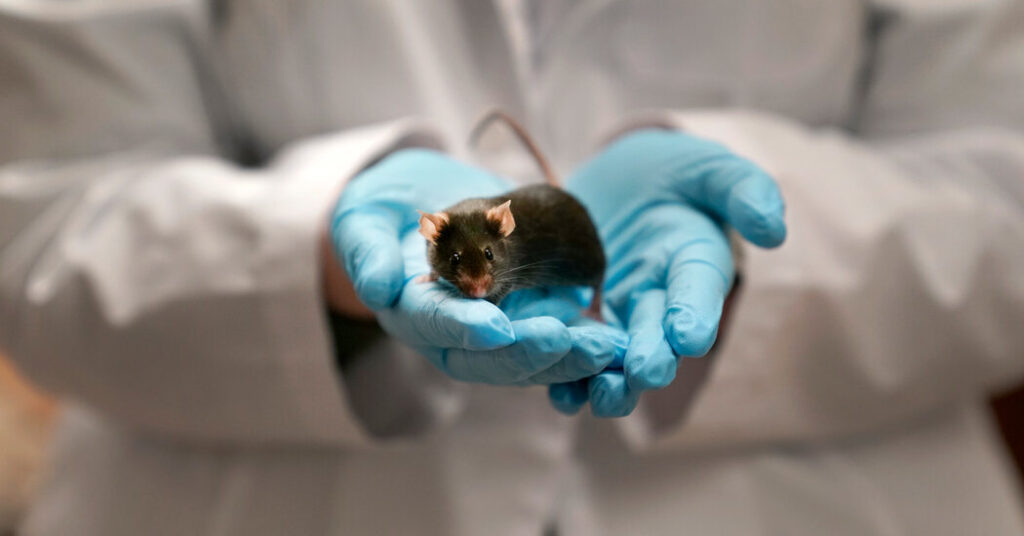On April 1, the Trump administration’s initiative to reduce government budget allocations reached Morgantown, W.Va. Here, federal scientists dedicated their time to examining health and safety risks that American workers face. That morning, hundreds of workers at the National Institute for Occupational Safety and Health found out they were laid off and would no longer have access to the facility.
More than 900 laboratory animals were left behind. The institute eventually managed to relocate about two-thirds of them—mostly mice along with a few rats—sending them to university laboratories, according to two recently dismissed facility staff members. Unfortunately, the remaining 300 animals were euthanized last week.
In recent months, the Trump administration has directly targeted America’s research sector, dismissing numerous federal scientists, canceling existing research grants, and suggesting substantial cuts to the funding essential for laboratory operations.
These actions have led to many scientists losing their jobs and have disrupted clinical research, significantly affecting the lab animals critical to the nation’s biomedical studies.
“Many animals are going to end up being sacrificed—killed,” remarked Paul Locke, a specialist in laboratory animal law and alternatives to animal research at the Johns Hopkins Bloomberg School of Public Health.
Experts noted that it is hard to determine the full impact, partly because several of the administration’s initiatives are involved in ongoing legal disputes. Moreover, animal research is often kept confidential; specific figures on the number of animals held in U.S. laboratories are unavailable.
Many scientists hesitated to speak candidly about the future of their lab animals, concerned about possible backlash from animal rights groups or repercussions from their employers or the Trump administration. Numerous requests for comments from animal research facilities and scientists went unanswered.
“I believe they’re silent because it’s a terribly distressing situation,” Dr. Locke explained. “Keeping the animals would be extremely costly. Conversely, sacrificing them would lead to public outrage.”
Some animal rights advocates welcome the disruption, even with the loss of animal lives. However, many researchers feel heartbroken, viewing this as a situation where numerous animals die without contributing any new scientific insights.
“We understand the gravity of using animals in research,” stated Kyle Mandler, a pulmonary toxicologist laid off from the National Institute for Occupational Safety and Health, under the Centers for Disease Control and Prevention. He was in the midst of researching hazardous dust from the production of specific construction materials when about two dozen of his mice were euthanized last week—his study left incomplete and data uncollected.
“It’s disheartening and infuriating that their lives and sacrifices will amount to nothing,” he lamented.
The Department of Health and Human Services did not directly address inquiries about the status of the animals in Morgantown. However, an unnamed official did say in an email that the changes at NIOSH were part of a “larger restructuring,” which involved merging multiple programs into the new Administration for a Healthy America.
“Staff and operational changes are being implemented gradually,” stated the official. “Animal care activities are still in operation, and H.H.S. is dedicated to adhering to all federal animal welfare regulations throughout this transition.”
Sudden Halts
In recent years, many nations, including the U.S., have begun to reduce reliance on animal research due to its high costs, ethical concerns, and its inconsistent predictive capability regarding human outcomes. This month, the U.S. Food and Drug Administration announced plans to gradually discontinue animal testing for specific drug categories and to encourage the use of alternatives such as organoids or “organs on chips,” which are three-dimensional human organ models created from lab-grown cells.
Experts acknowledge the immense potential of these new technologies. However, some argue that, at least for now, lab animals are still crucial for biomedical research, as certain types of data can only be obtained this way.
“We aspire to move away from this practice,” noted Naomi Charalambakis, the director of science policy and communications at Americans for Medical Progress, a nonprofit advocating for the continued use of animals in biomedical research. “But we haven’t reached that point yet.”
Animal research, which typically takes years to plan and conduct, requires consistent funding and skilled veterinarians and technicians to ensure daily care. The Trump administration’s actions have jeopardized all of this.
At the Morgantown facility of the National Institute for Occupational Safety and Health, the sudden terminations initially included animal care staff. “But they protested, stating they wouldn’t leave while there were animals in the facility,” shared a former lab technician, who preferred to remain anonymous to protect future job opportunities.
After the Trump administration froze funding to Harvard this month, researchers working on a new tuberculosis vaccine faced the likelihood of having to euthanize their rhesus macaques. Fortunately, the study and the monkeys were saved when a private donor provided additional funding.
While some animals from closed projects may be transferred to other labs or institutions, others might have already undergone experimental treatments or been exposed to harmful pathogens or toxins. Lab animals, many bred to exhibit specific behaviors or health issues, cannot simply be released into the wild. Moreover, experts express concern that the sudden surplus of lab animals may overwhelm the capacity of animal sanctuaries across the nation.
Ann Linder, an associate director at the animal law and policy program at Harvard Law School, expresses concern that the future of many lab animals will depend on the “whims and decisions” of individual researchers and lab staff.
“Without appropriate oversight, some choices may be detrimental, often made out of cold necessity, lacking care for the welfare of the affected animals,” she cautioned.
An email.


